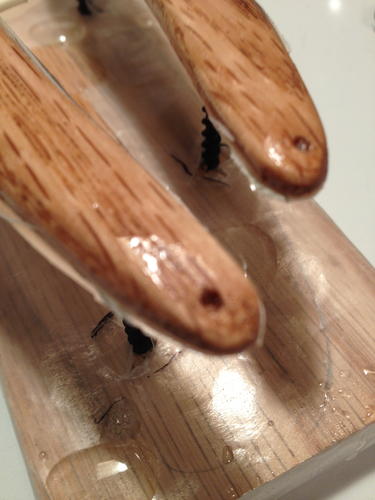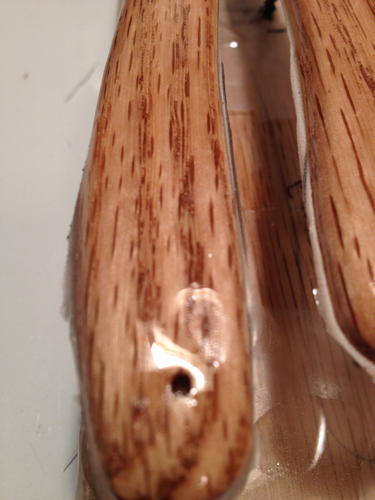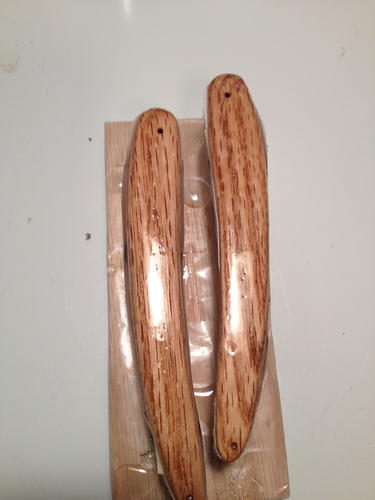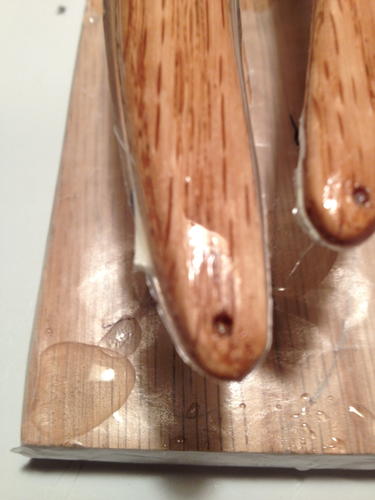Results 1 to 2 of 2
Thread: End Grain And Epoxy Resin
Threaded View
-
01-09-2013, 03:34 AM #1Senior Member

- Join Date
- Apr 2012
- Location
- Jersey City
- Posts
- 225
Thanked: 50 End Grain And Epoxy Resin
End Grain And Epoxy Resin
Sorry for the Iphone pics, wish I could give you better detail.


I'm attempting my first effort at using epoxy resin as a finish. I'm using Aristrocrat Liquid Glass 2 part epoxy. The scales are red oak sanded to 220 and cleaned with mineral spirits. They are mounted to a piece of wood supported by dry wall screws and held in place with double stick tape. The screws allowed me to adjust the height for level. I put the stand in a cigar box to keep the dust down while curing and then applied the epoxy. Then I closed the lid for two days.
It's cured finish has some lint or dust in it which I kind of expected. What I didn't expect was what appears to be unsealed end grain. Would the epoxy have been drawn that far up into the grain normally or is it because it's red oak and other woods with tighter grains not have done this? Would a wash coat normally be applied to prevent it? Contamination of some kind?
There's also a couple of spots on the top of one of the scales that looks like the grain was exposed and it sucked in.


Aristocrat said to add electrical tape to the bottom surface to prevent drips. After 4 hours of curing, remove the tape and the epoxy comes with it. Seems to have worked. The epoxy spread out to the edges of the tape and dripped off there. All I was left with was a thin film on the side of the scale.
Any suggestions? This was really a practice run so I'm not concerned about scewing this up. I could dump them and not lose any sleep over it. But it would be helpful if I could get some help with the end grain question.


 LinkBack URL
LinkBack URL About LinkBacks
About LinkBacks






 Reply With Quote
Reply With Quote
